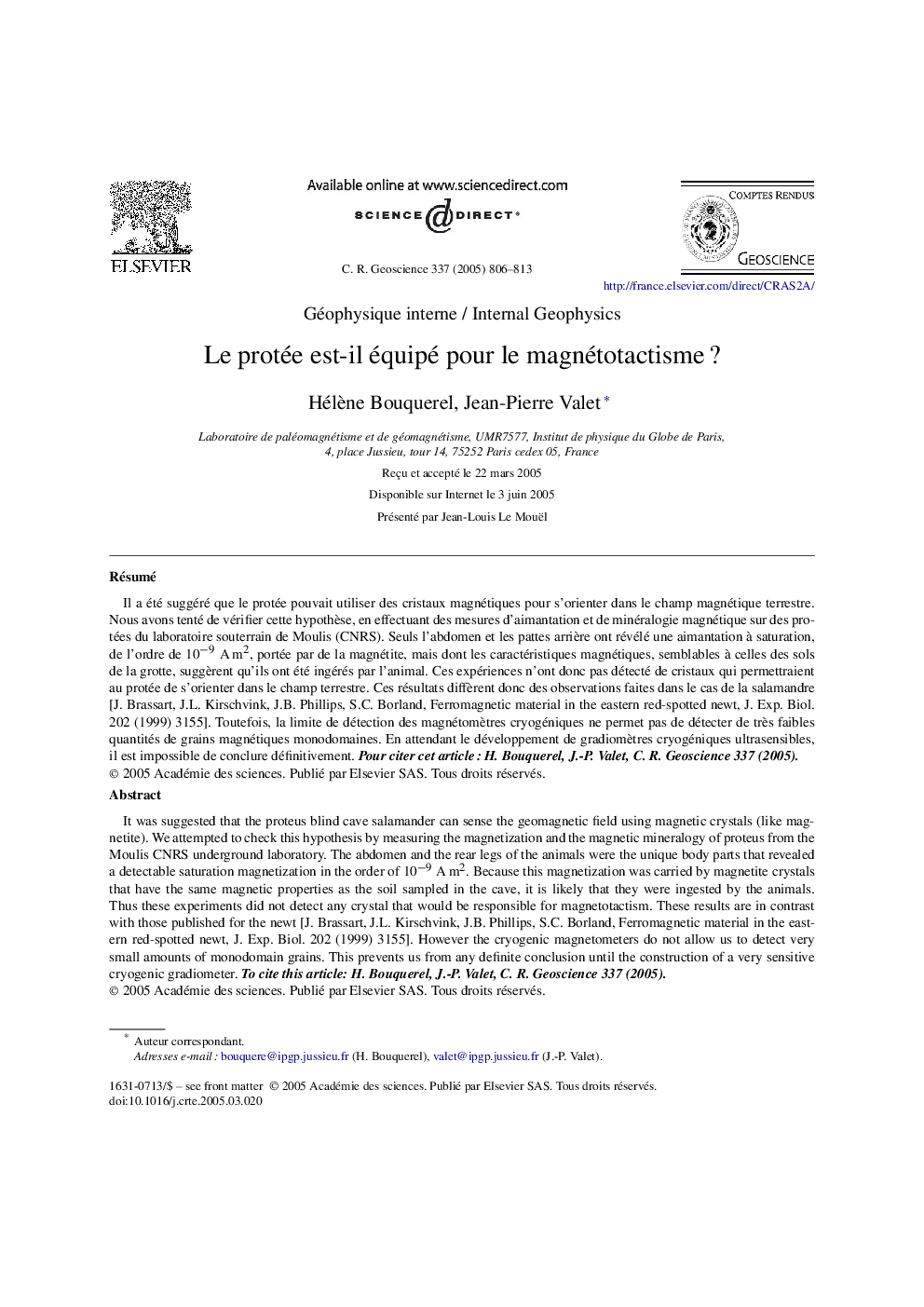| Article ID | Journal | Published Year | Pages | File Type |
|---|---|---|---|---|
| 9461886 | Comptes Rendus Geoscience | 2005 | 8 Pages |
Abstract
It was suggested that the proteus blind cave salamander can sense the geomagnetic field using magnetic crystals (like magnetite). We attempted to check this hypothesis by measuring the magnetization and the magnetic mineralogy of proteus from the Moulis CNRS underground laboratory. The abdomen and the rear legs of the animals were the unique body parts that revealed a detectable saturation magnetization in the order of 10â9 Aâm2. Because this magnetization was carried by magnetite crystals that have the same magnetic properties as the soil sampled in the cave, it is likely that they were ingested by the animals. Thus these experiments did not detect any crystal that would be responsible for magnetotactism. These results are in contrast with those published for the newt [J. Brassart, J.L. Kirschvink, J.B. Phillips, S.C. Borland, Ferromagnetic material in the eastern red-spotted newt, J. Exp. Biol. 202 (1999) 3155]. However the cryogenic magnetometers do not allow us to detect very small amounts of monodomain grains. This prevents us from any definite conclusion until the construction of a very sensitive cryogenic gradiometer. To cite this article: H. Bouquerel, J.-P. Valet, C. R. Geoscience 337 (2005).
Keywords
Related Topics
Physical Sciences and Engineering
Earth and Planetary Sciences
Earth and Planetary Sciences (General)
Authors
Hélène Bouquerel, Jean-Pierre Valet,
